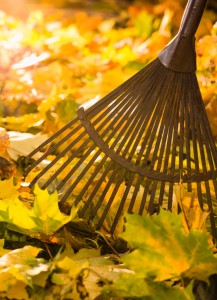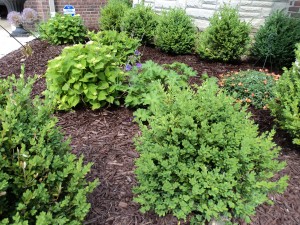October 1, 2016
The hot and dry weather of October goes on. But even now, while the roses and hydrangeas are still blossoming and the chrysanthemums and dahlias are putting on an amazing show, you should be thinking about starting the garden cleanup tasks for autumn. The killing frost will be coming soon, so getting the cleanup chores underway now will mean less stress once the weather turns really cold. You’ll be glad you started early when spring rolls around again.
Cleaning up the Lawn
Grass grows more slowly as the temperature drops, and once the temperature of the air reaches approximately 40 degrees, lawn growth will cease altogether. So get the grass mown one last time for the season so that the shorter blades are less likely to offer a late-season breeding ground for mold or fungus. Give the grass one last fertilizing as well; it won’t make a lot of difference now, but the extra feeding will mean that your grass will be greener and healthier once it starts its spring growth.
Removing the Annuals
By this time of year, annuals like marigolds, petunias, and asters are looking pretty seedy and spent. It’s time to clean them out and get them onto the compost pile (check to be sure you aren’t composting any diseased or pest-infested plants). Spade into the beds any dried leaves and general debris that the plants have left behind.
Preparing the Perennials
Start your fall cleanup of perennials well before the first frost. Once their major blooming season is past, trim back the spent blossoms and stems. Fertilizing should stop by mid-September, but be sure that you don’t let your perennials dry out: deep watering is best through to the time when the leaves start to fall. If you have tender perennials you’re planning on over-wintering in the house, pot them up while they are still enjoying late summer vigor, then set them in a protected area in the yard to get them ready for their temporary home inside – but don’t forget to give them plenty of water. Bulbs which have died back can now be lifted and divided.
Winterizing Shrubs and Trees
Late summer and early fall offer an excellent opportunity to trim back any dead or dying branches from your larger shrubs and trees. Trees especially should be inspected for any branches that could prove a problem during winter storms. If you have large trees with limbs that need removal, arrange with a professional landscaping service to help you cut down and dispose of these.
Mulching the Beds
Mulching is an activity that should go on throughout the growing season, but it becomes especially important in autumn. Start now to apply mulch to all your garden beds to ensure that bulbs and perennials are safe from heaving during the long winter when the soil freezes solid.
Raking up Leaves
Hot and dry summers always cause some leaf loss; this should be dealt with immediately. When the major leave loss begins, keep up with the fall on a regular basis. The raked leaves should be composted, providing a rich mulch for your garden beds.
Gallery
“We recommend Twin Oaks to any entity looking for a full-service, talented, and responsive provider.”


